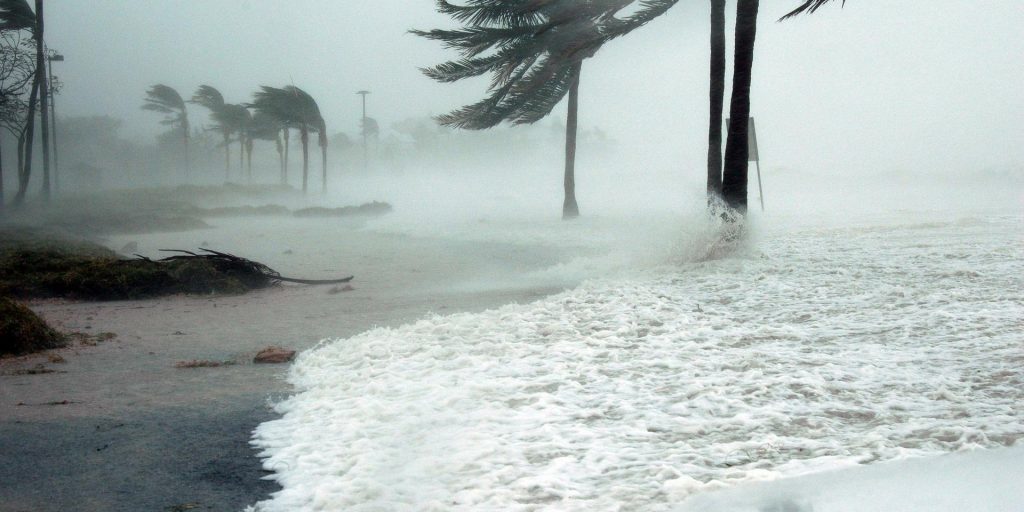In the early days of hurricane season, experts predict a busy year—communities should prepare
From the Capitol riot in January to Russia’s invasion of Ukraine a few months later, and the recent series mass shootings, it’s been a busy news year to say the least—so much is happening in the present that it takes effort to consider what the future will hold. But while the 24-hour news cycle continues its daily churn, there’s a lot happening on the seasonal clock.
Local administrators should take notice.
June 1 marked the beginning of hurricane season, which runs through Nov. 30. Forecasters at the National Oceanic and Atmospheric Administration’s (NOAA) Climate Prediction Center are projecting another above-normal 2022 Atlantic hurricane season—the seventh busier-than-average season in a row. The center is forecasting “a likely range of 14 to 21 named storms (winds of 39 miles per hour or higher), of which six to 10 could become hurricanes (winds of 74 miles per hour or higher), including three to six major hurricanes (category three, four or five; with winds of 111 miles per hour or higher),” according to a brief from the federal administration.
“As we reflect on another potentially busy hurricane season, past storms—such as Superstorm Sandy, which devastated the New York metro area 10 years ago—remind us that the impact of one storm can be felt for years,” said Rick Spinrad, Ph.D., administrator of NOAA. “Since Sandy, NOAA’s forecasting accuracy has continued to improve, allowing us to better predict the impacts of major hurricanes to lives and livelihoods.”
Notably, the outlook is for seasonal activity, overall, and isn’t a landfall forecast. It’s the continuation of a trend that’s picked up in the last decade. Last year marked the third-most active Atlantic hurricane season on record, producing 21 named storms that inflicted an estimated $80 billion and killed nearly 200 people. Twenty-twenty is the most active season on record, and after that is 2005.
“Hurricane Ida spanned nine states, demonstrating that anyone can be in the direct path of a hurricane and in danger from the remnants of a storm system,” said FEMA Administrator Deanne Criswell. “It’s important for everyone to understand their risk and take proactive steps to get ready.”
Public utility companies, cities and counties are among the many organizations expectedly preparing to assist customers and community members as the Atlantic starts to get busy. Ten years after Superstorm Sandy devastated much of the East Coast, for example, New Jersey’s largest utility, Public Service Electric and Gas (PSE&G), has invested $4.8 billion into its infrastructure.
The work includes new construction, rebuilding structures and upgrading equipment at 26 stations, many of which were damaged by flooding during Sandy, according to a statement issued by the company. Over the last decade, the organization also installed smart grid technologies, replaced nearly 2,000 miles of aging gas lines and added digital technologies to make its network more agile.
“From working with the city to relocate and elevate our main substation out of the flood zone to integrating upgraded cables and stronger poles, PSE&G has been an invaluable partner in making our community safer and more resilient,” said Kenneth Ferrante, director of public safety for the City of Hoboken, much of which was submerged under 6 feet of water during Sandy.
Last year, the updates proved effective when Tropical Storm Ida swept through, bringing with it “historic flooding to most of the utility’s service territory. Tropical Storm Ida and its remnants would cause more than $75 billion in damage nationwide—surpassing the damage caused by Superstorm Sandy in 2012,” the statement continues.
The updated infrastructure “stood strong.” About 215,000 customers lost power during Tropical Storm Ida, compared to more than 2 million during Superstorm Sandy.
Elsewhere, communities across the United States and its territories, from Massachusetts to Florida, Texas to the U.S. Virgin Islands, are likewise taking steps to ensure preparedness. Deanne Criswell, director of the Federal Emergency Management Association (FEMA) stressed the importance of taking precautionary measures like creating an emergency kit, investing in backup generators and making sure life-sustaining equipment is on hand, among other actions.
“While it is FEMA’s goal to lead the nation, to set the example for the level readiness and preparedness we need to see for this hurricane season—we can’t do this without you. Please don’t wait—act now,” said Criswell.




















